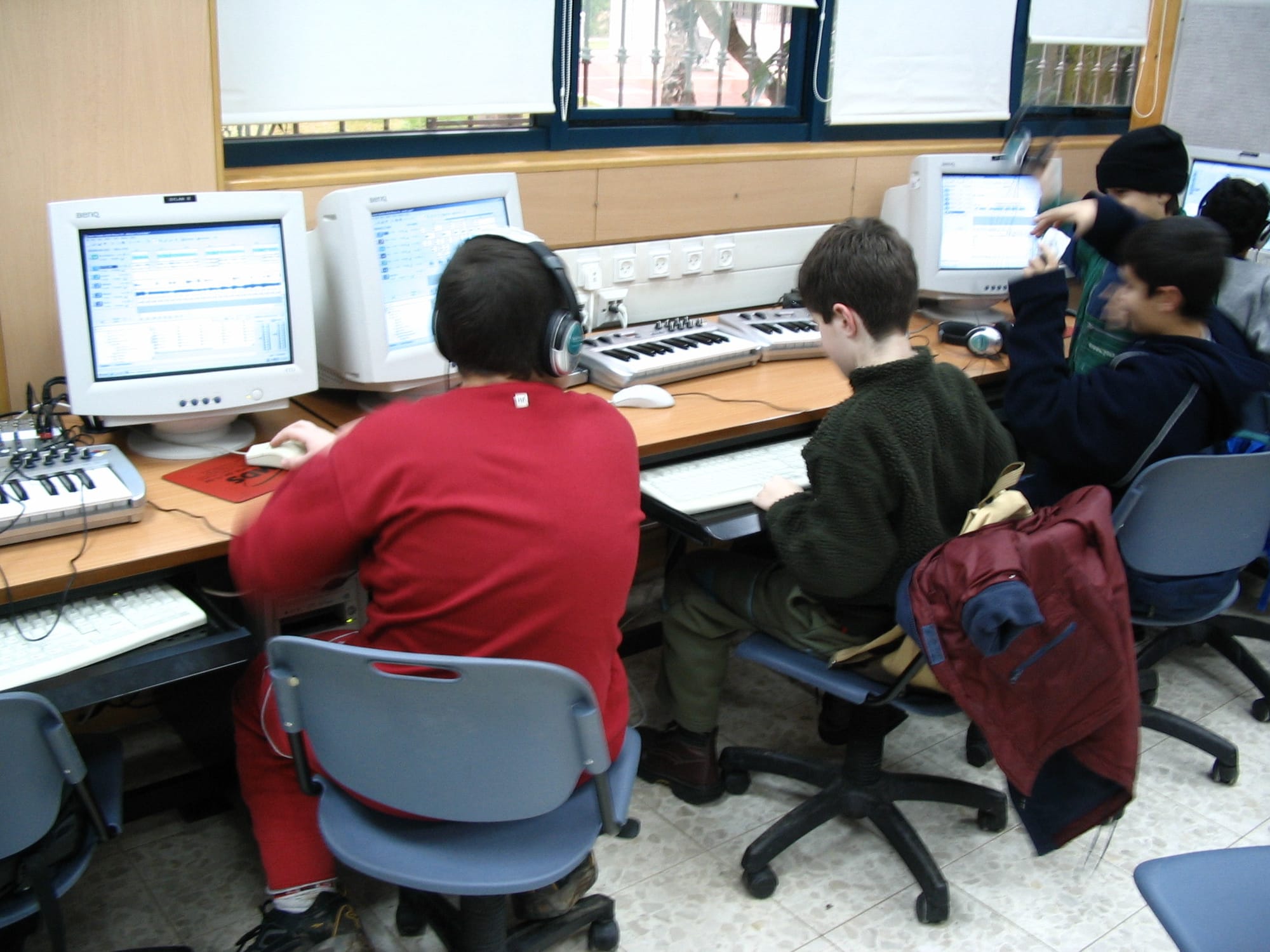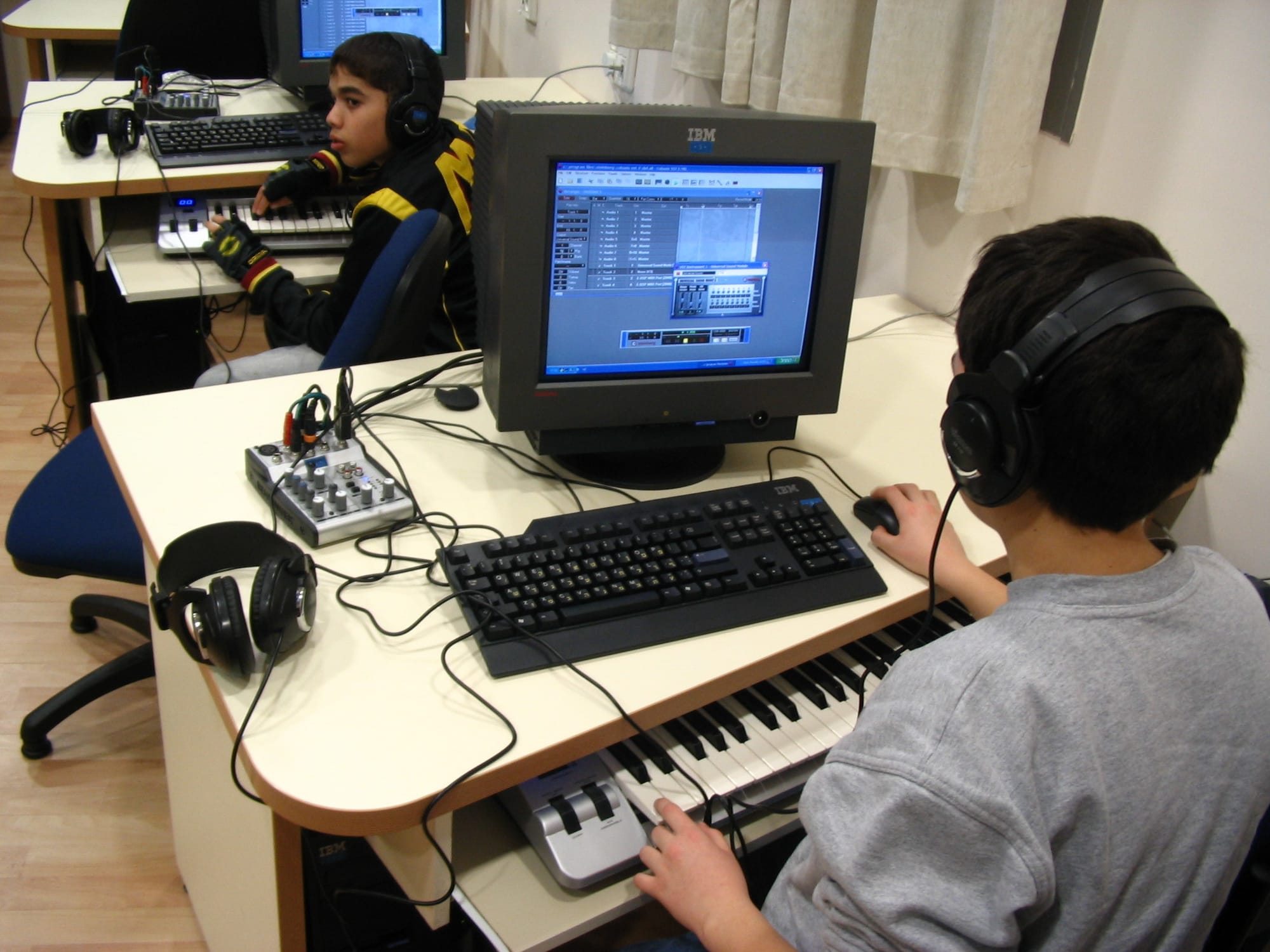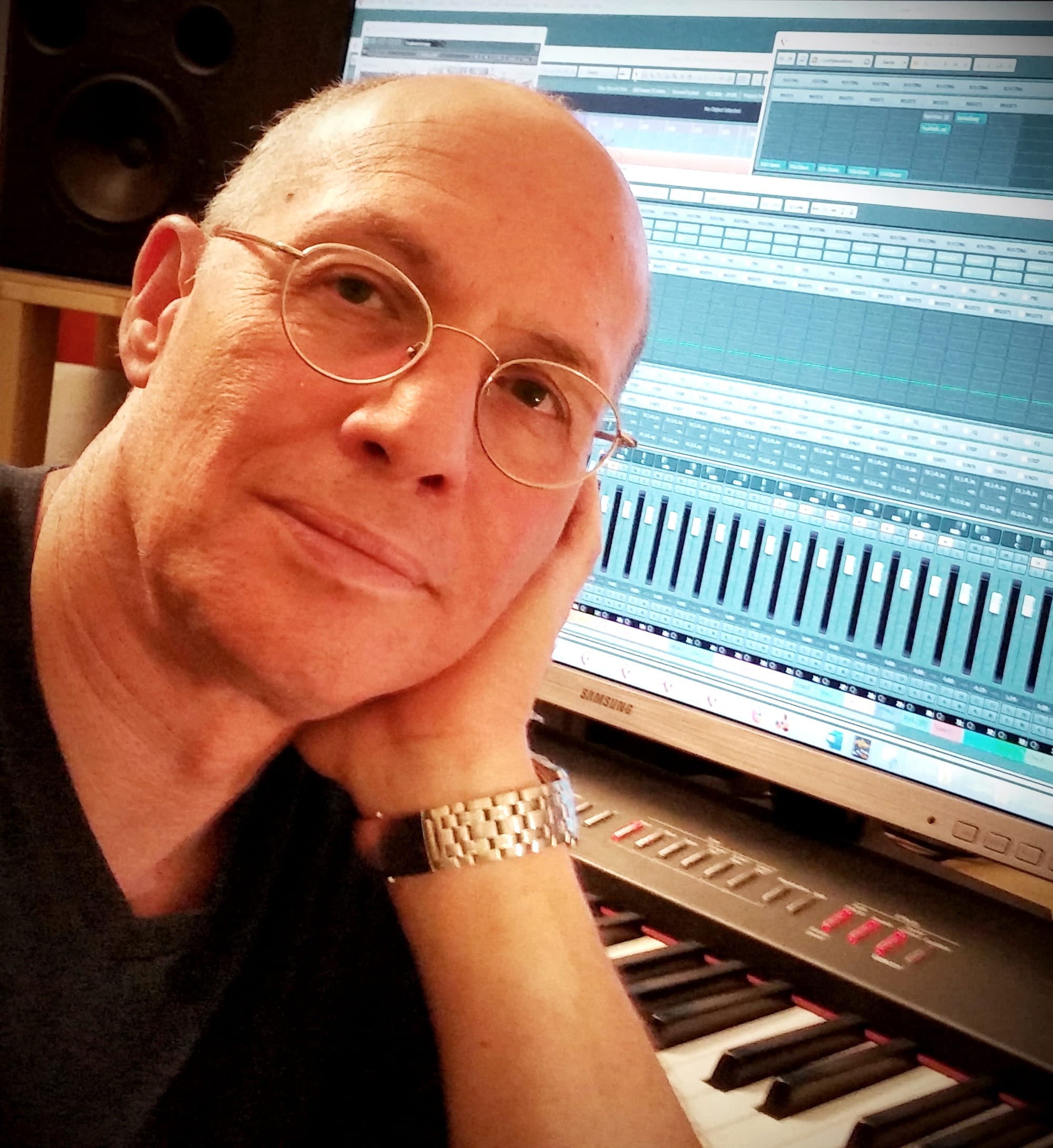English
Computer-Aided Musical Creativity
Welcome to Music-Creation.net, a website dedicated to the creation of computerized music within the music education field in Israel and abroad.
This website has been developed to increase awareness about the field, provide a forum for students and teachers, and for anyone else who might be interested.
The site also features original student compositions and classroom photos, selected articles, links, and more.
Your feedback is appreciated.
Contact us: eilona@013.net

Introduction
In education, and especially in art education, it is critical to encourage students towards creative activities.
In music education, those activities are often complimented by listening, performance, comprehension, and analysis.
In their compositions, students can build upon their learning by applying their own unique skills, talents, and personal expressions
Most students do not possess the natural ability to compose and perform, nor do they have the musical fluency required for complex compositions that contain structure, orchestration, melody, diversity, harmony, etc.
However, with the aid of computerized activities, students can actually create musical pieces containing all the above elements.
Objectives
Primary Objective
The student’s personal creation is the way to blur the traditional boundaries that have been created by Western musical culture and defined by the holy trinity of composer-performer-listener. The objective of the activity is to enable the student to play all three roles in a way that connect him to each idividual component of the musical world.
Additional Objectives
- To awaken students’ enthusiasm and desire to create music and to provide them with the satisfaction that stems from the creative processes and its outcomes.
- Throughout the creative process, learners will be able to identify musical elements and foundations, as well as, become familiar with new musical styles.
- To enable students to operate differently but also in conjunction with traditional teaching methods within the musical world. Teaching music by means of computer enhances and compliments those existing methods and not meant to either change or replace them.
Objectives and How They Are Accomplished
Objective | How It Is Accomplished |
Providing an outlet for personal musical creation. | Finding the appropriate programs that that enable expression during the learning process, as well as, the ability to find and create musical contexts. |
Creating satisfaction and increasing the student’s self-image. . | Ensuring a gradual increase in difficulty, showing concern for the learner’s success, and providing frequent encouragement. |
Providing a forum for the expression of the student’s musical tastes and personal ambitions. | Providing flexibility within classroom activities, as well as, opportunities for each student to work with varied resources. |
Maintaining a high level of motivation. | Placing an emphasis on enjoyment, satisfaction, and challenge. |
Classroom Methods
Each student works either alone or with a partner in a station consisting of a computer that is equipped with musical software, a keyboard, a mixer, and headphones.The computer contains a large array of learning resources, such as recorded compositions, songs, music scores, lyrics, articles, photos, and more.
The majority of each lesson is dedicated to individual work and frequently integrates supplemental instruction or explanation. Throughout consequent lessons, students are assigned learning or musical tasks and progress through each according to their abilities.
The initial tasks within the program are small, short, and presented in a structured manner, making it possible for each student to internalize the basic working principles. Future tasks enable each student to exercise increasing freedom in their selections of subject matters and creative procedures.
In addition to controlling the development of such musical components as tempo, melody, harmony, and orchestration, the student in the “composer’s shoes” can also write each of them.
Students save their work along each step of the way and can build onto their compositions with each consecutive lesson.
Occasionally, class “concerts” are held so that students can showcase their compositions.
Target Audience
Who is the creative computerized activity intended for?
Essentially, almost everyone.
What Ages? It’s hard to pinpoint a minimum age because these days musical software is available for kindergarten level. But when it comes to using software that allows flexibility and options for compositional possibilities, it’s important to remember that young students at the elementary level are still limited in their computer operating abilities. The higher the students’ ages are, the more easily (and enjoyably) they will be able to operate the computerized music stations.
Musical Proficiency? A musical background can obviously aid and enrich the compositional experience, but it’s possible to embark on creative, computerized, musical activities without any prior training (i.e. music lessons, playing instruments, etc.). There are many computer programs that don’t utilize musical notes, and this is why familiarity with the musical language is not a requirement for these activities. It’s important to remember that musical subjects should be incorporated into the creative process.
Creative, computerized musical activities are appropriate for the following groups:
1.Elementary and middle school students taking music classes or involved in extracurricular musical activities.
2. High school students enrolled in musical programs.
3.Conservatory students.
4. Students at any of the above institutions who practice music independently at home.
It’s important to remember that students enrolled in computerized music classes generally come from educational systems that employ tradition learning methods, in which students are used to simply absorbing and responding. These students are not always accustomed to a learning style that requires initiative and creativity, which is why this experience could initially create some fear and intimidation. In order to overcome these obstacles, lesson planning in the creative field – a field which ultimately relies on traditional founding principles and the practicality that stems from them – should be open, flexible, pluralistic, and aimed at awakening creative forces.

.2022: Hearing Beyond the Staves – School of Life. Tel Aviv University and NYU Tel Aviv
